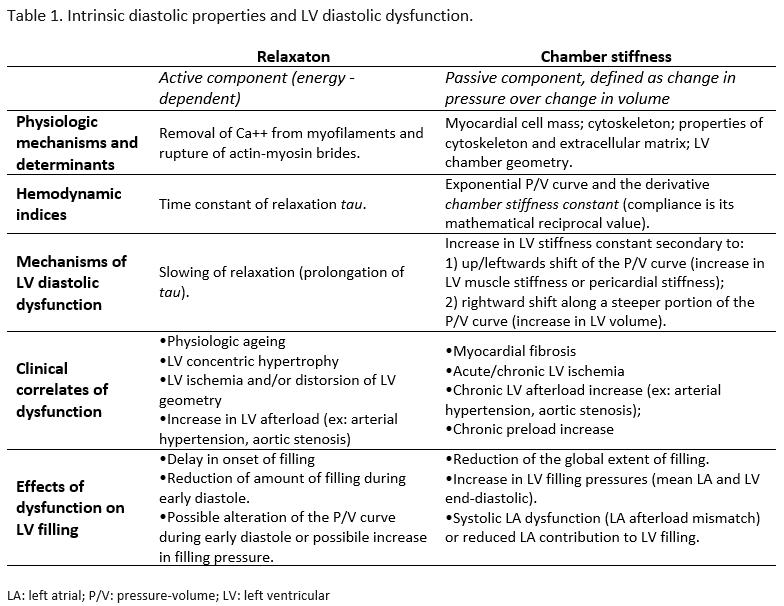[Page 2]
AIMS
The objectives of LV DF analysis are twofold:
1) to estimate the determinants of LV DF (i.e, the main LV diastolic properties):
a) relaxation (in early diastole);
b) LV chamber compliance (in mid-to-late diastole).
2) To estimate the LV FP.
This analysis plays an important role in the diagnosis of different heart diseases, in establishing a therapeutic strategy, in the optimization of patient follow-up, and for prognostic stratification (4).
DIASTOLIC DYSFUNCTION
The term diastolic dysfunction (DD) refers to an alteration of LV relaxation and/or chamber compliance (Figure 1; Table 1) with consequent impairment of LV filling, regardless of the presence of systolic dysfunction and/or clinical symptoms. The main consequence of LV DD is an increase in LV FP (Figure 1). It is possible to speak of “diastolic failure” if it is associated with reduced exercise tolerance and dyspnoea. It is impossible to diagnose an isolated DD based only on the clinical status (history, physical examination, ECG, and chest x-ray). Cardiac catheterization remains the gold standard for measuring LV diastolic properties and FP even if, due to its invasiveness, it is not practical for routine diagnostic use. Doppler echocardiography is still the technique of choice for its reliability, reproducibility and ease of use (11).
